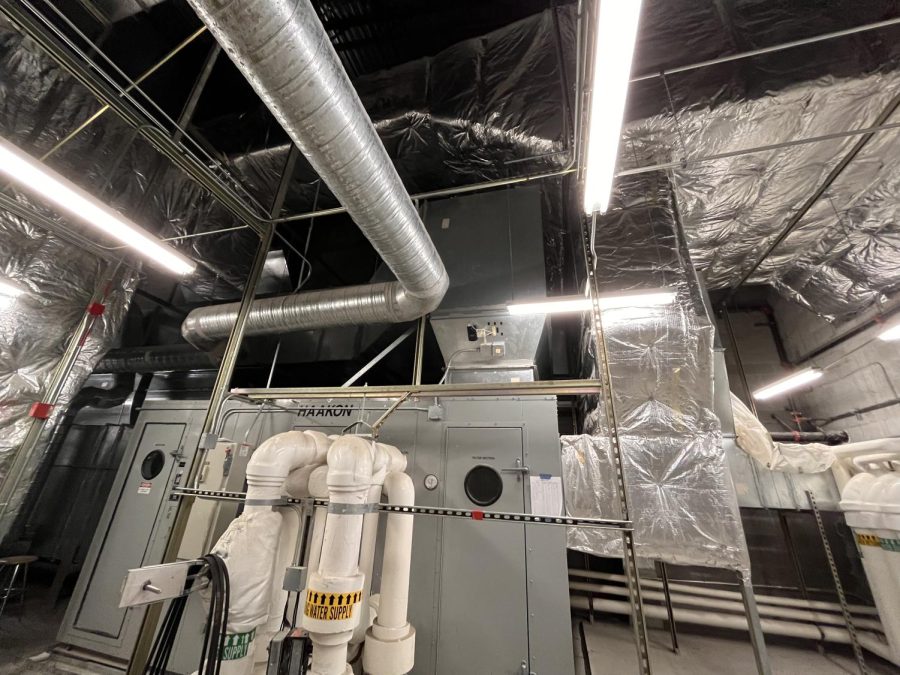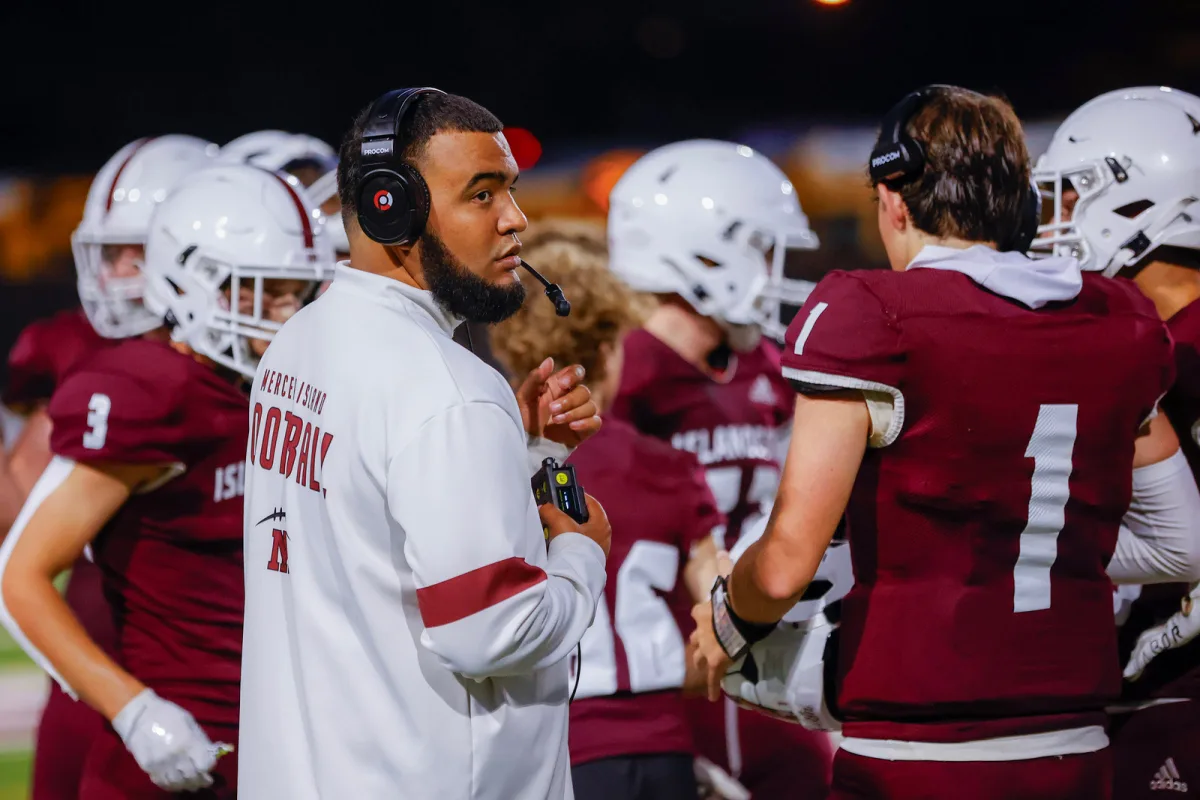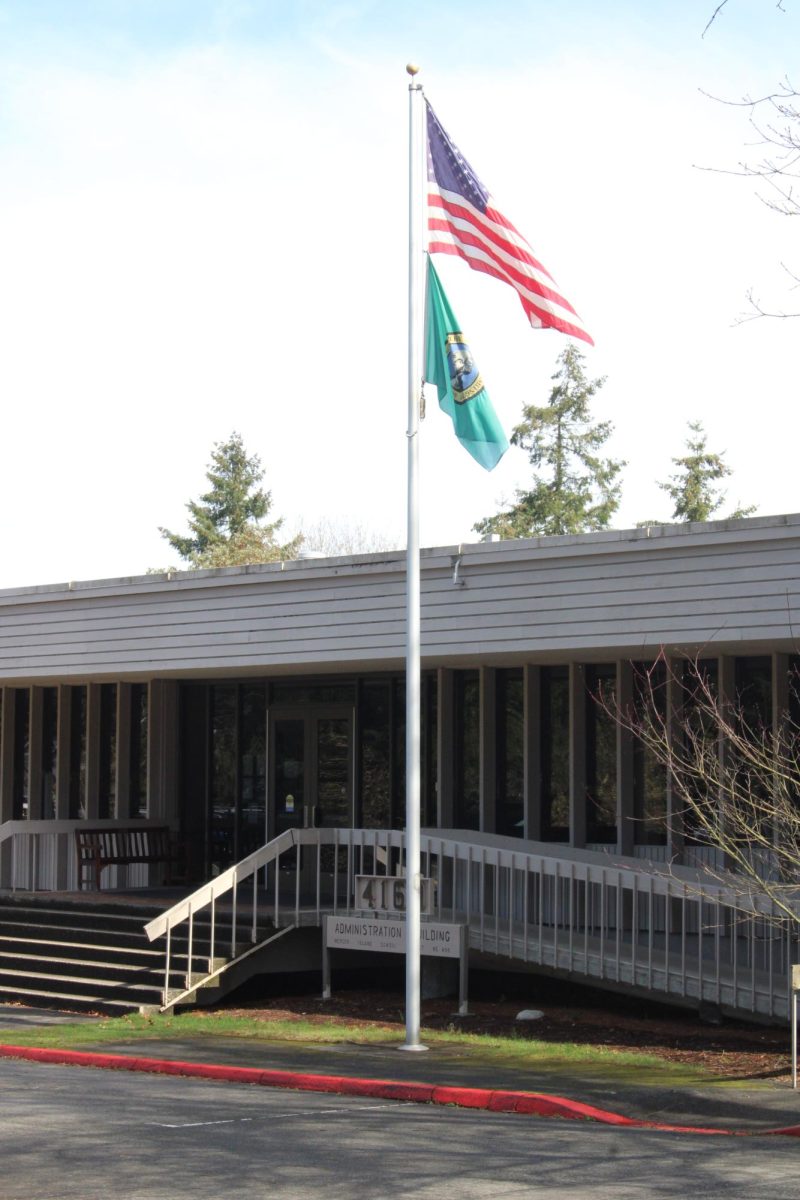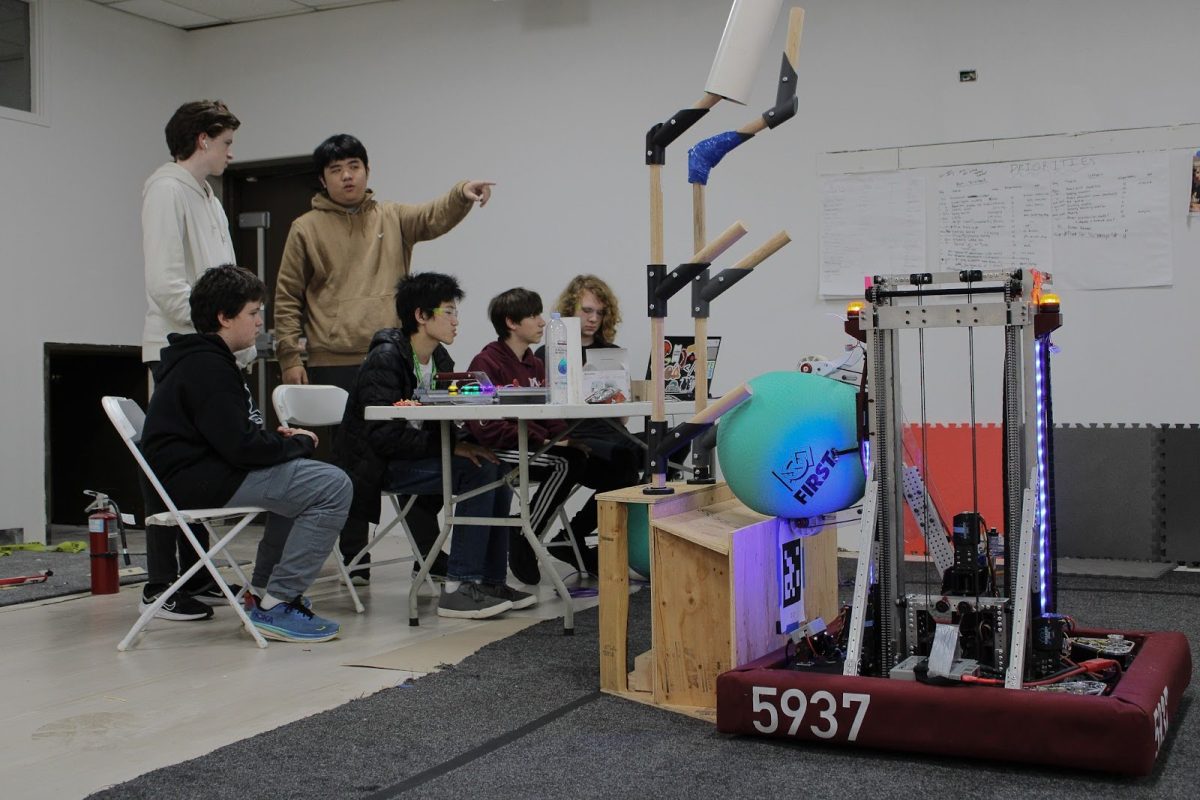When you ask a student what they think the biggest issue within the school is, many answer with the same thing: it is too cold. It is no secret that the temperature of our school can be inconsistent; when measured, temperatures can jump over six degrees Fahrenheit between rooms in the same hallway.
While many students find these temperature changes bothersome, most do not know why it occurs. The answer to that question lies within the HVAC systems of the school. HVAC stands for heating, ventilation and air conditioning, and these machines can weigh upwards of one ton.
In a sample size of room temperature within the school, most fell around 70 degrees Fahrenheit. However, some dropped well below this margin. MIHS English and AP Psychology teacher Jeff Randolph’s classroom measured as low as 66 degrees Fahrenheit one day. However, English teacher Eric Goldhammer’s recently built room, one hallway over, measured 72.3 degrees Fahrenheit. Janitor Shannon Allen says that this could be due to the age of the HVAC unit.
“[With] newer additions, each room has its own HVAC unit, its own little furnace or AC unit per room, so it’s more climate-controlled,” Allen said. “They did that during the remodel. And the room will exchange air with the hallway a little bit.”
Another crucial component of these HVAC units is their temperature buffers. Allen explained the heat buffers as “a standardized comfort level”–a set range of temperature. Allen explained it using an imaginary temperature buffer set from 71-76 degrees.
“Cool air won’t turn on until the temperature in the room gets over 76. Warm air won’t turn on until it gets below the bottom number [71], so that’s kind of a dead zone, but the way HVAC units are set up, you need a buffer so the heat and air aren’t trying to come on together, so that’s the two numbers you see.”
The question that is raised by this is why can the school not simply raise the temperature buffers? Allen says that the main reason is the price of changing the temperature buffers. Since the buffers are set up to a generally accepted comfortable rate, it is usually just assumed that they are set to a range that will not need to change. However, this became an issue during the COVID-19 pandemic, when air from outside was filtered in to avoid contamination and germ flow.
“During COVID-19, we had no exchange of air from room to room. It was all outside air being pumped in, that’s why it always got cold when it was cold outside, [because] air passing over the heating coils didn’t pick up that much,” Allen said.
When the HVAC unit recognizes that more hot or cold air is needed in a room, the machine is sent a message, and it then passes the air over heating or cooling coils depending on whether the room is too hot or too cold.
However, Allen continues on to specify that while the school is not using the same amount of outside air as was used during the COVID-19 pandemic, a decent amount is still in circulation today. This could be a contributing factor to the general temperature of the school.
“Usually it’s a recycling unit … We’re pulling in a lot of fresh air from outside, but it’s not 100% like we were,” Allen said.
While it might be costly, Allen says that if enough students were in support, it would be possible to reprogram the temperature buffer. However, there are some quick fixes for teachers whose classrooms are at an uncomfortable temperature. Most teachers will notice a black button near their light switch in their classroom. Allen used the example of three rooms in the 200s hallway to explain their function.
“If 201, 203 and 205 all hit their buttons and they’re [too cold and] running off the same HVAC unit, it overrides the computerized settings, [and] calls for more heat from that unit,” Allen said.
However, there is another way to quickly make a room warmer. If a damp paper towel is put over the button, the temperature sensors will believe that the room is too cold and call for more heat. When this was tested in Room 210, the temperature rose from roughly 72 degrees Fahrenheit to around 75 degrees Fahrenheit.
Student comfort is not the only reason that school temperatures should be kept at an even, comfortable rate. The Association for Learning Environments published a study conducted at Westview High School showing that test scores changed drastically when the temperature of the school environment was changed. When the temperature was 61 degrees Fahrenheit, the average score on a test stood at 76%. However, when it was bumped up to 72 degrees Fahrenheit, the test scores made a large jump to 90%.
Washington Administrative Code 246-366-090 requires that “the entire facility inhabited by students and employees shall be heated during school hours to maintain a minimum temperature of 65 degrees Fahrenheit,” with the exception of gyms. The Washington State Board of Health is the one who sets these standards, and these codes are enforced by local health administrators–in our case, the King County administrators. When contacted, the Washington State Board of Health says that they inspect schools for violations of codes like this from time to time. If a building is found to be violating code, there could be monetary penalties.
Unless the school chooses to finance the changing of the temperature buffers, it looks like students and staff will be destined to stay in the cold until summer. Until then, teachers can try using the paper towel trick if the temperature of their room is too uncomfortable.
Allen summed up the issue succinctly: “It’s as high-tech as a building that was done in ‘96 can be.”










Lexi Krawiec • Mar 3, 2023 at 1:31 pm
Thanks for answering the questions everyone has been wondering!